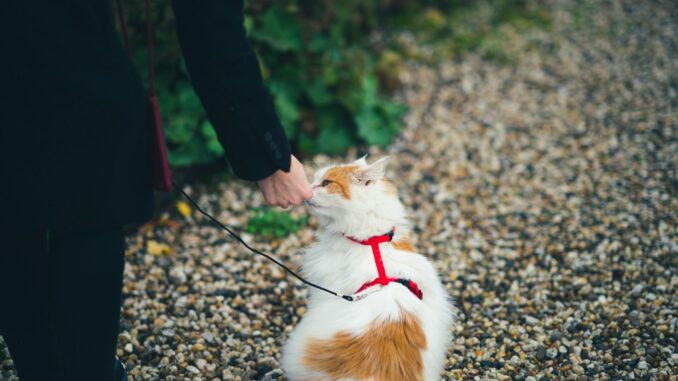
Cats are often seen as independent and sometimes aloof pets, but that doesn’t mean they can’t be trained. In fact, cats are intelligent creatures capable of learning a variety of behaviours, commands, and tricks. Training your cat can improve your relationship, reduce behavioural problems, and stimulate their mind. If you’re wondering how to get started with cat training, this basic guide will walk you through essential tips and techniques.
Why Train Your Cat?
While not every cat owner thinks about training their feline companion, there are several significant benefits:
- Improved Behaviour: Training can help curb unwanted behaviours such as scratching furniture or jumping on counters.
- Enhanced Communication: Teaching commands or cues allows you to better communicate with your cat.
- Mental Stimulation: Training keeps your cat mentally active, which is important for their overall well-being.
- Strengthened Bond: Training sessions can deepen your bond and mutual trust.
- Safety: Teaching your cat to respond to their name or come when called can keep them safer indoors or outdoors.
Understanding Cat Psychology
Before training, it’s important to understand how cats learn. Unlike dogs, cats are less motivated by pleasing their owners and more driven by rewards like food, play, or affection. Cats respond best to positive reinforcement—a reward-based approach rather than punishment. Consistency, patience, and timing are essential for success.
Getting Started: Basic Cat Training Tips
1. Use Positive Reinforcement
Treats are the most effective way to motivate your cat during training. Use small, tasty treats your cat loves and reward immediately after the desired behaviour. Praise and gentle petting can also be used, but edible treats typically yield quicker results.
2. Keep Cat Training Sessions Short
Cats have relatively short attention spans. Aim for 5 to 10-minute training sessions, and try to train multiple times a day if possible. Keeping sessions brief helps keep your cat engaged and prevents frustration.
3. Be Consistent
Always use the same commands or cues for each behaviour you want to teach. Use a calm and clear voice. Consistency helps your cat associate words or gestures with actions.
4. Start With Simple Commands
Begin training with simple behaviours such as:
- Come When Called: Teach your cat their name and encourage them to come to you with treats.
- Sit: Using a treat, encourage your cat to sit, and reward them as soon as they do.
- Use the Litter Box: Reinforce good litter habits with praise and reward.
5. Avoid Punishment
Never hit, yell, or punish your cat for not following commands. Punishment can create fear and mistrust and negatively impact your bond.
Essential Cat Training Techniques
Clicker Training
Clicker training is a popular method that uses a small device that makes a clicking sound to mark the exact moment your cat performs the desired behaviour. The click is followed immediately by a reward, helping your cat associate the sound with positive outcomes. This technique is highly effective and allows for precise communication.
How to start clicker training:
- Introduce the clicker by clicking and immediately giving your cat a treat to build a positive association.
- Use the clicker to mark behaviours you want to encourage.
- Pair the click with a verbal command or gesture.
Target Training
Target training involves teaching your cat to touch a target, like a stick or your hand, with their nose or paw. This skill can be the foundation for trick training or guiding your cat.
Steps for target training:
- Present the target near your cat and wait for them to investigate.
- When they touch it, immediately reward with a treat and/or click.
- Gradually add a verbal cue such as “touch.”
Cat Training for Common Behavioural Problems
Scratching Furniture
Cats scratch to mark territory and maintain their claws. To redirect this natural behaviour:
- Provide scratching posts or pads covered in materials like sisal.
- Use treats and praise when your cat uses the scratching post.
- Try deterrents like double-sided tape on furniture.
Jumping on Counters
Cats love to explore high surfaces, but jumping on counters may be undesirable:
- Use clicks and treats to reward your cat for staying off counters.
- Provide accessible cat trees or shelves as alternative elevated spaces.
- Use gentle deterrents such as aluminum foil or a motion-activated device.
Cat Training: Enrichment and Tricks
Training isn’t just about commands but can also be a fun way to enrich your cat’s life. Consider teaching tricks such as:
- High Five
- Fetch
- Roll Over
- Come When Called
Trick training helps with mental stimulation and provides interactive play opportunities.
Tips for Success
- Be patient and Don’t rush.
- Use high-value treats your cat loves.
- End sessions on a positive note.
- Adjust training based on your cat’s personality and preferences.
- Consult a vet or professional trainer if you encounter challenges.
Training your cat is both possible and rewarding. With patience, consistency, and positive reinforcement, you can teach your feline friend a variety of behaviours that enhance their life and yours. Start small, focus on fun, and watch your bond grow stronger with every successful command. Whether addressing behavioural issues or teaching tricks, cat training is a wonderful way to engage with your pet intellectually and emotionally.
Leave a Reply
You must be logged in to post a comment.